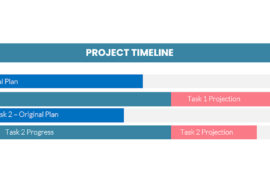 It was Rodney Dangerfield’s signature one-liner and with his passing, the originator of the Chief Project Officer’s battlecry is gone. While it’s true that some CPO’s get tremendous respect in their organizations, the number one complaint I hear from people in this position is how misunderstood they are.
It was Rodney Dangerfield’s signature one-liner and with his passing, the originator of the Chief Project Officer’s battlecry is gone. While it’s true that some CPO’s get tremendous respect in their organizations, the number one complaint I hear from people in this position is how misunderstood they are.
In a perfect world, the position of Chief Project Officer would be a carefully studied thing. A long-term strategy which would outline the CPO’s role right up there with the CIO, the CFO and the COO would be articulated and the CPO would command the same kind of resources and respect that these other senior executives get. Unfortunately, it’s not always the case. All too often the position of CPO is created in response to a problem. The organization suffers some catastrophic project and is determined to never feel that kind of pain again. ‘A senior, “one of us” will have to take charge’, they say. Sounds like a plan. Now a vp-level executive with many years of management experience is in the role. Perhaps that’s you. The needs of management become acute and you find that the resources that seemed so plentiful before you were in charge are not necessarily the case.
First of all resources are not always aligned with the goals of a CPO. If you are a new CPO in a matrix organization, you’re likely to find that the matrix is heavily oriented towards the organizational axis. This makes the resource manager king, not the project manager. A new CPO in this environment can quickly be made to feel like they are there to firefight rather than implement a new structure.
Systems are the next challenge. CFO’s have the luxury of 200 years of reporting culture. Standard reports like a Balance Sheet and Profit and Loss are part of 100% of financial reporting tools. Entire cultures are built around balanced transactions. The project management culture doesn’t have this level of harmony and it shows in systems. The most likely scenario? You have pockets of project management mostly working in silos with little or no integrated reporting or analysis. You may be able to see that task # 225 in project 27 is 14 days late but what does that mean to the organization?
A further challenge in this kind of culture is that the very people who are being more productive in project management will likely be reluctant to be first to give up their individual effectiveness in order to support centralized project management. These same people are probably the ones with the most project management training and experience.
If you’re already depressed, don’t be. The very reason the Chief Project Officer position is created is to bring sense to all this disparate thinking. There are many tools at your disposal. If you’re thinking, however that software will provide a quick fix, back up the bus. The most effective thing to start with is determining the process and deciding what kind of process will make you most effective. Software can then be a good agent for change as people are encouraged to move towards it. A study commissioned by Cisco determined that if you change your process then automate it you’re likely to see an improvement in efficiency by as much as 20%. If you automate the process – then change it, you may see an actual decrease in efficiency by as much as 9%!
The most effective thing for a CPO to do in order to start gaining respect? Have a plan and make it a long term one. When people see that you’ll stay the course, respect will not be far behind. As you start to implement the change in culture that comes with organizational project management, you’ll start to see your proponents line up.




